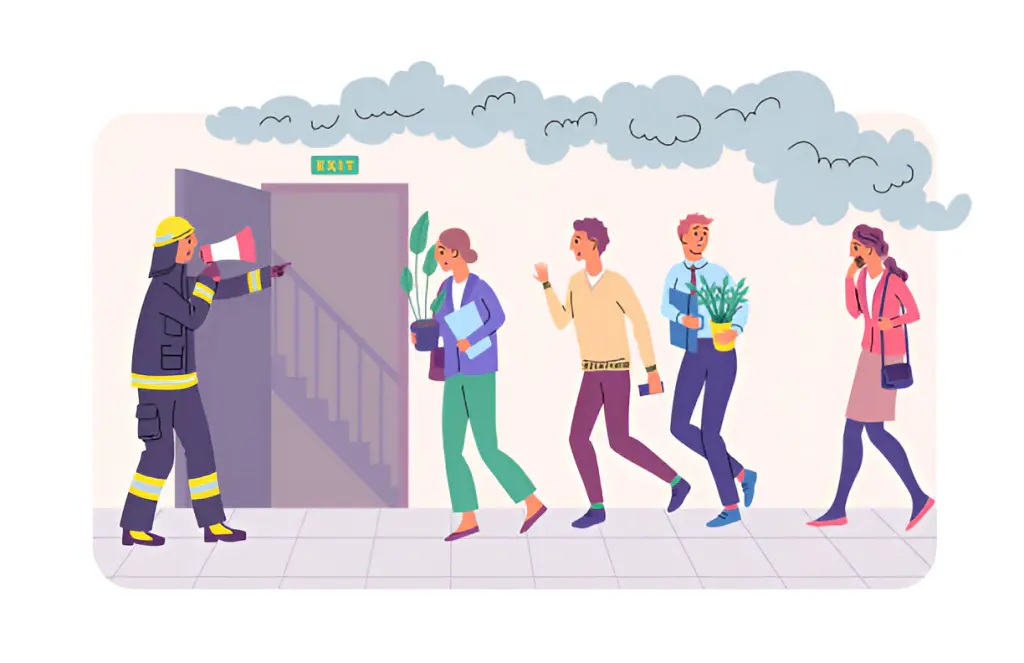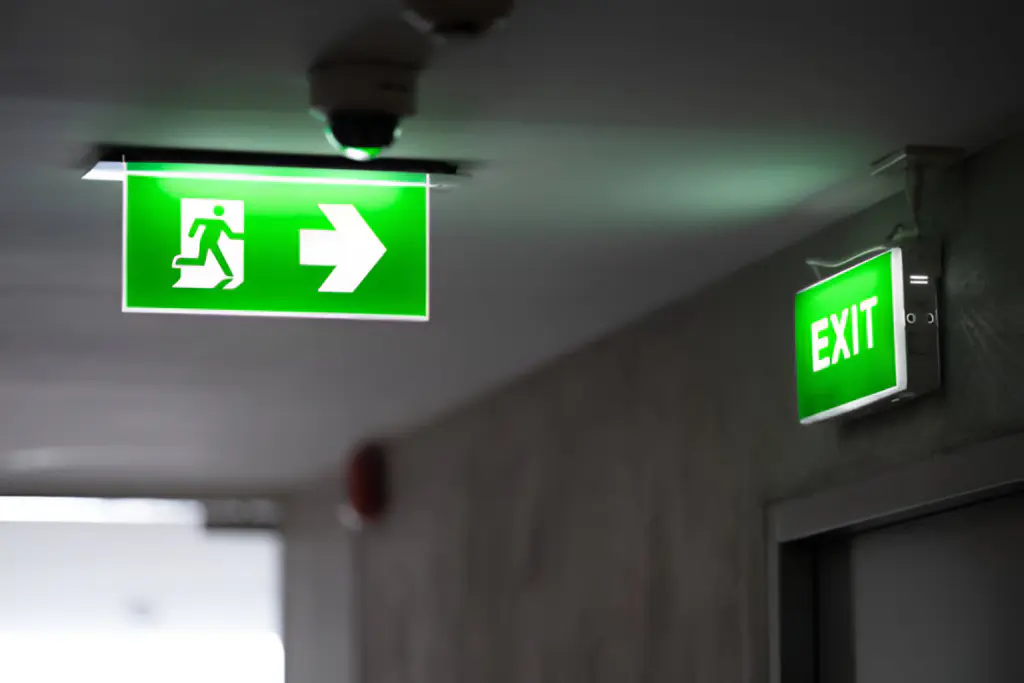In the realm of building safety, the importance of fire safety measures cannot be overstated. Among the plethora of options available, certain features stand out as critical for ensuring the safety of occupants and the integrity of structures.
The 5 Most Important Fire Safety Features for Buildings include sophisticated fire alarm systems, comprehensive sprinkler coverage, clearly marked and unobstructed fire exits, visible and reliable emergency lighting, and ongoing safety training for residents and staff. Each component plays a pivotal role, yet their effectiveness is contingent upon proper integration and maintenance. Reflecting on these elements raises a crucial question: how well-equipped are our buildings to handle an emergency fire situation?
Fire Safety & Evacuation Features
Ensuring the rapid alerting of occupants is the cornerstone of effective fire safety in any building. This imperative extends beyond the mere installation of fire alarms, delving into a holistic approach that incorporates multiple critical features to safeguard lives.

Integral to this strategy are exit signs, emergency lights, fire extinguishers, and fire sprinklers—each playing a pivotal role in facilitating a safe and timely evacuation during emergencies.
Exit signs must be strategically placed and well-lit to guide occupants to safety efficiently, even in situations where visibility may be severely compromised due to smoke or power failures. Complementing these signs, emergency lights are essential as they ensure that exit paths are illuminated, reducing panic and confusion among the building occupants. These lights must be robust, reliable, and regularly tested to confirm their operational readiness when most needed.
Furthermore, fire extinguishers are a first line of defense against the spread of fire. Positioned at accessible points throughout a building, these devices provide individuals the opportunity to contain small fires before they escalate, thereby preventing potentially catastrophic outcomes. Knowledge and training on the use of extinguishers are equally important, as they empower occupants to act swiftly and effectively.
Lastly, fire sprinklers are indispensable in their capacity to automatically suppress fires, significantly reducing the heat and smoke levels, which facilitates safer evacuation conditions. The integration and maintenance of these systems are paramount, not only to comply with safety regulations but also to ensure they function as intended during critical moments.
Collectively, these elements form a comprehensive fire safety and evacuation infrastructure, essential for protecting lives and property.
Fire Alarm Systems
Modern fire alarm systems are integral to building safety, swiftly detecting smoke and heat to alert occupants of potential danger. These sophisticated systems employ a variety of technologies and strategies to ensure rapid and reliable communication in the event of a fire, facilitating timely evacuation and emergency response.
- Detection Technology: Modern systems use advanced smoke, heat, and sometimes gas detectors that can identify fire signatures at the earliest possible stages.
Photoelectric smoke detectors excel in recognizing smoldering fires, while ionization detectors are quicker to respond to flaming fires. Thermal detectors activate due to changes in temperature, providing additional safeguards.
- Alarm Notifications: Upon detection of fire-related cues, the system triggers loud sirens and flashing lights to alert all occupants, regardless of their location within the building.
This immediate notification is crucial for early evacuation, preventing injuries and potential fatalities.
- Integration with Emergency Services: Fire alarm systems are often directly connected to local fire departments, enabling automatic alerts that dispatch emergency responders as soon as a fire is detected.
This linkage reduces response time significantly, which can be critical in controlling and extinguishing fires before they spread extensively.
- Maintenance and Compliance: Regular testing and maintenance are mandatory to ensure that fire alarm systems function correctly when needed.
Compliance with national and local fire safety standards is not just a legal requirement but also a critical component of operational reliability. These standards dictate specifications for system installation, performance, and maintenance.
Fire Exits
Several buildings are equipped with well-marked fire exits, a fundamental requirement for ensuring the safety of occupants during emergencies. These exits are strategically located to facilitate a swift and safe evacuation, minimizing the risk of injury or death caused by fire. In alignment with rigorous safety standards, fire exits must be clearly visible and accessible at all times, a criterion enforced through regular compliance checks by safety authorities.

Fire exits operate in conjunction with other safety measures like fire alarm systems, which signal the need to evacuate. Upon activation, these systems help direct the flow of occupants to designated exits, crucial during high stress situations where panic can lead to chaos. The integration of illuminated exit signs and emergency lighting further aids in navigation, ensuring that exit paths are unmistakable and can be followed even in smoke-filled or power-out conditions.
To uphold the efficacy of fire exits, regular inspections are mandated to check for obstructions or faults that might impede their use. It is imperative that these exits remain unblocked by furniture or equipment and that their integrity is maintained free from structural damage. Furthermore, the doors should ideally be fitted with panic bars that allow easy egress without the need for unlocking, thus supporting an unhampered flow of traffic.
For building occupants, familiarity with evacuation routes is vital. Regular drills, therefore, play an essential role in emergency preparedness, teaching individuals how to react promptly and proceed to the nearest exits.
These exercises not only reinforce the location and use of fire exits but also help to evaluate and enhance the existing evacuation strategies, ensuring maximum safety for all occupants during any emergency.
Fire Prevention Features
Fire prevention features in buildings play a critical role in minimizing the risk and spread of fires, safeguarding both occupants and property.
These features constitute integrated systems and materials designed to prevent the occurrence of fire or limit its impact. The implementation of these preventive measures not only protects lives but also mitigates financial losses and structural damage.
The following are four essential fire prevention features:
- Fire-Retardant Materials: Utilizing fire-retardant materials in building construction is pivotal. These materials, including fire-resistant doors, walls, and floors, are engineered to withstand high temperatures without compromising structural integrity. Their use is critical in areas prone to high fire risk such as kitchens, electrical rooms, and storage areas containing flammable materials.
- Automatic Sprinkler Systems: These systems play a decisive role in fire control. Upon detection of fire, they automatically dispense water over the affected area, significantly reducing the spread and intensity of the fire. Equipping buildings with comprehensive sprinkler systems ensures an immediate response to fire incidents, often suppressing fires before they escalate.
- Fire Detection Systems: Advanced fire detection systems are integral to early fire discovery and management. These systems include smoke detectors and heat sensors that alert occupants and fire services at the first sign of abnormal heat or smoke levels, facilitating swift evacuation and response.
- Regular Maintenance and Inspection: Continuous maintenance and inspection of electrical systems and heat-producing equipment prevent fires caused by faults or overheating. Scheduled inspections ensure all fire prevention systems are operational and compliant with current safety standards.
Implementing these features requires a meticulous approach to design and maintenance, emphasizing a proactive stance on fire safety.
Promoting Fire Safety Awareness
In today’s rapidly urbanizing world, promoting fire safety awareness is crucial to ensuring the well-being of occupants in any building. As architectural complexity increases, the integration of comprehensive awareness strategies becomes indispensable. This not only involves the dissemination of knowledge about potential hazards and preventive measures but also includes the cultivation of a proactive mindset towards fire safety among all building occupants.

Effective fire safety awareness programs hinge on regular, structured education and drills that familiarize occupants with emergency procedures and equipment. It is imperative that these programs are tailored to the specific features and potential risks of each building. For instance, high-rise buildings require different evacuation strategies compared to sprawling campus-like facilities. Regular updates to these programs ensure that they remain relevant and effective in the face of evolving building designs and technologies.
Moreover, the role of digital tools and social media in enhancing the reach and impact of fire safety messages cannot be understated. Interactive online courses, virtual reality simulations, and regular safety alerts through mobile apps are modern approaches that engage a tech-savvy population. These tools make learning about fire safety more accessible and engaging, thus increasing the likelihood of information retention and compliance in emergency situations.
Ultimately, the goal of promoting fire safety awareness is to embed a culture of safety that transcends individual actions. It involves creating an environment where safety is everyone’s responsibility, encouraging vigilance, and fostering a community that is well-prepared to act swiftly and effectively in the face of fire emergencies.
This collective approach not only mitigates the risk of fire incidents but also enhances the overall resilience of communities against such unforeseen disasters.
Frequently Asked Questions
How Do Smart Building Technologies Integrate With Fire Safety Systems?
Smart building technologies enhance fire safety systems by enabling real-time monitoring, automated alerts, and efficient evacuations through interconnected sensors and controls, significantly improving response times and occupant safety during emergencies.
What Are the Legal Consequences of Non-Compliance With Fire Safety Regulations?
Non-compliance with fire safety regulations can result in severe legal consequences, including fines, penalties, and potential criminal charges. It can also lead to liability for injuries or fatalities and increased insurance costs.
How Does Building Material Choice Impact Fire Safety?
The choice of building materials critically impacts fire safety by determining the structure’s fire resistance. Non-combustible materials can prevent fire spread, enhancing overall safety and compliance with stringent building codes and regulations.
Can Decorative Elements in Buildings Affect Fire Safety?
Decorative elements in buildings, such as wall hangings or facade features, can impact fire safety by influencing flame spread and smoke production, necessitating careful material selection and adherence to fire safety regulations.
What Is the Role of Ventilation Systems in Fire Safety?
Ventilation systems play a crucial role in fire safety by managing smoke and toxic gases, aiding in safe evacuation, and helping to control the spread of fire within a building. Proper design and maintenance are essential.
Conclusion
In conclusion, the integration of advanced fire alarm systems, well-placed exit signs and emergency lighting, automatic fire sprinkler systems, clearly marked and accessible fire exits, and comprehensive fire safety training and drills constitutes an essential strategy for enhancing building safety. These features collectively ensure that both the detection and suppression of fires and the safe evacuation of occupants are effectively managed, thereby significantly reducing the risks associated with fire emergencies in buildings.









